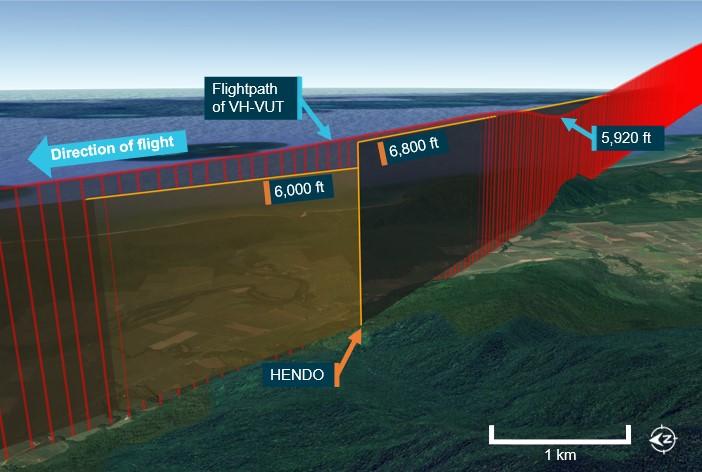
|
Key points
|
An Australian Transport Safety Bureau interim report details a pair of occurrences involving Boeing 737-800 passenger aircraft which descended below minimum altitude constraints on approach into Cairns Airport, in North Queensland, in October 2022.
The interim report aims to provide timely information, gathered in the early evidence collection phase of the investigation, which is on-going. It contains no analysis or findings, which will be detailed in the final report.
In each occurrence, flight crews (one Virgin Australia, the other Qantas) entered the same standard arrival (HENDO 8Y) and approach (RNP Y runway 33) into their flight management computers, ahead of a planned landing on runway 33 at Cairns. However, neither flight crew selected the required approach transition.
In both cases, when presented with the discrepancy by the flight management computer, flight crews resolved it by manually connecting the arrival waypoint HENDO to the intermediate approach fix waypoint noted on the approach chart.
“As an unintended consequence, this removed the 6,800 ft descent altitude constraint associated with the initial approach fix waypoint in each aircraft’s programmed flight path,” ATSB Director Transport Safety Stuart Macleod explained.
“In both occurrences, the aircraft therefore descended below that constraint, as well as the 6,500 ft minimum sector altitude in that segment of airspace.”
In both cases, air traffic control alerted flight crews of their low altitude. No terrain warnings were triggered in either occurrence.
“The first flight, on October 24, took place on a dark night, so the Virgin Australia flight crew conducted a go-around, and then landed without further incident,” Mr Macleod said.
“The second flight, on October 26, occurred in daylight under visual conditions, so the Qantas flight crew was approved for a visual approach by air traffic control, and landed without further incident.”
To date, the ATSB has interviewed the flight crews, examined recorded flight data, reviewed air traffic control audio and surveillance data, and reviewed operator and air traffic control procedures.
The interim report notes both operators have already taken steps to provide flight crews with further guidance, relating in particular to approaches where the selection of an approach transition is required.
“Going forward, the ATSB’s investigation will include further review and examination of the evidence gathered, as well as instrument procedure and waypoint naming processes and standards, and arrival and approach chart information and presentation,” Mr Macleod said.
A final report will be released at the conclusion of the investigation.
“However, should a critical safety issue be identified during the course of the investigation, the ATSB will immediately notify relevant parties so that appropriate and timely safety action can be taken,” Mr Macleod concluded.
Read the report AO-2022-051: Flight below minimum altitude occurrences, 40 km south of Cairns Airport, Queensland on 24 and 26 October 2022


